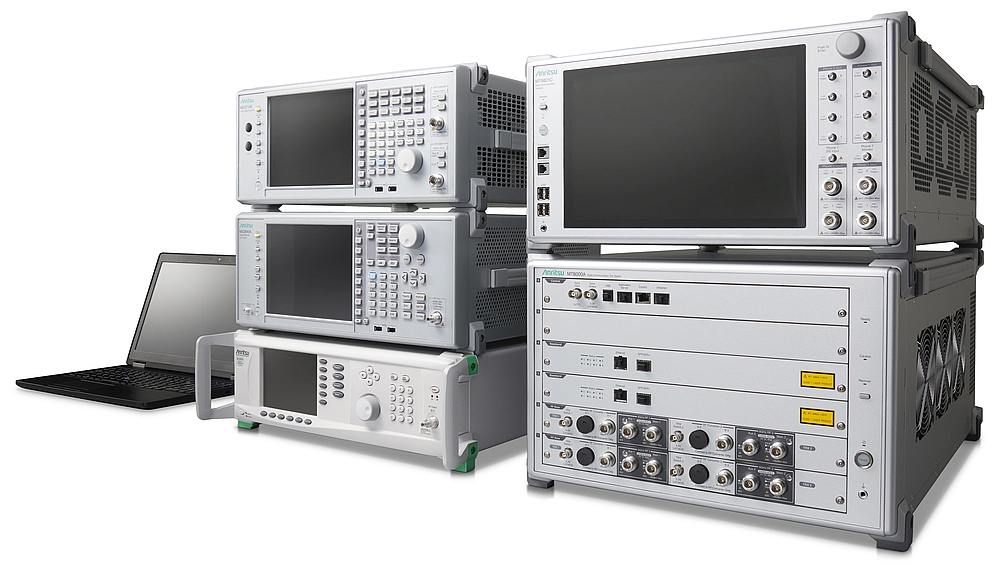- Anritsu announces two software tools for modeling 5G and LTE interference waveforms: Interference Waveform Pattern for 5G NR Receiver Test MX371055A and Interference Waveform Pattern for LTE Receiver Test MX371054A.
- These tools generate interference waveform patterns that meet 3GPP specifications to test the receiver sensitivity and throughput of 5G and LTE user equipment (UE) and communication modules using the MG3710E series vector signal generator.
Before 5G and LTE user equipment (UE) and communication modules can be commercialized, their manufacturers must ensure that their products comply with 3GPP requirements. These 3GPP RF Compliance Test, which are essential for the final evaluation of a product before it is marketed, are administered by a certified test organization. If a product is found to be non-compliant, it may need to be redesigned and retested. It is therefore essential to perform preliminary tests before proceeding to the final conformity test.
The MG3710E Vector Signal Generator will allow the generation of interference waveforms suitable for these preliminary tests. The two 3GPP compliant interference waveform tools have been designed to be accessible to engineers without specific interference waveform generation skills so that they can easily perform these interference tests.
These software tools are installed in the MG3710E generator which supports receiver sensitivity and interference testing by generating modulation waveforms up to 6 GHz. The generator is used in conjunction with the MT8000A Radio Communication Test Station and MT8821C Radio Communication Analyzer to perform the interference evaluation tests required by the 3GPP RF compliance testing requirements.
The tools are designed to support both in-house pre-testing by manufacturers to confirm the compliance of their 5G and LTE user equipment (UE) and modules operating at Sub-6 GHz frequencies prior to official 3GPP compliance testing. They can also be used in R&D to improve receiver sensitivity and throughput performance.






